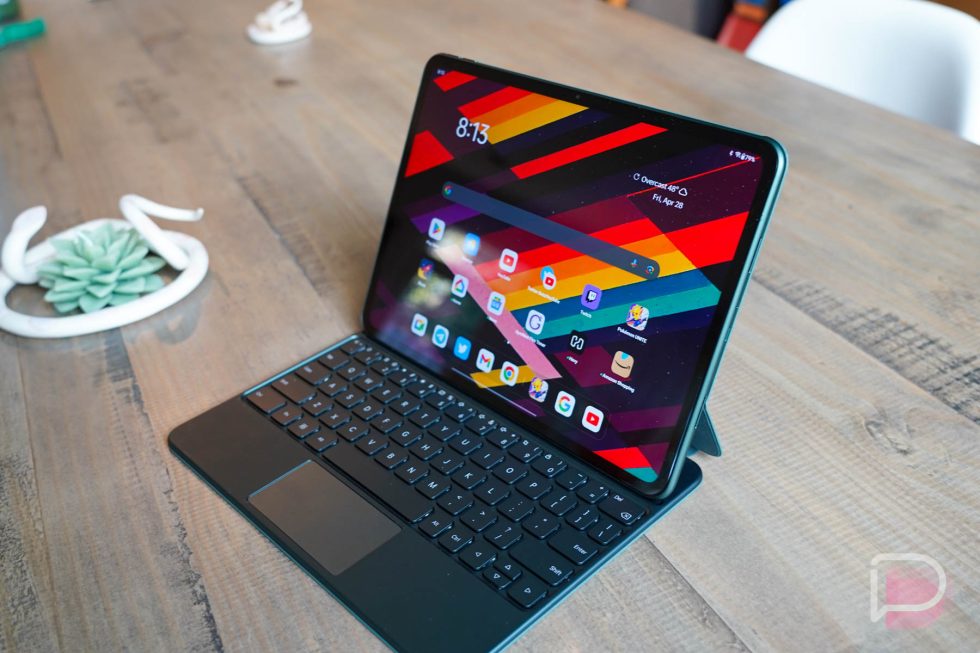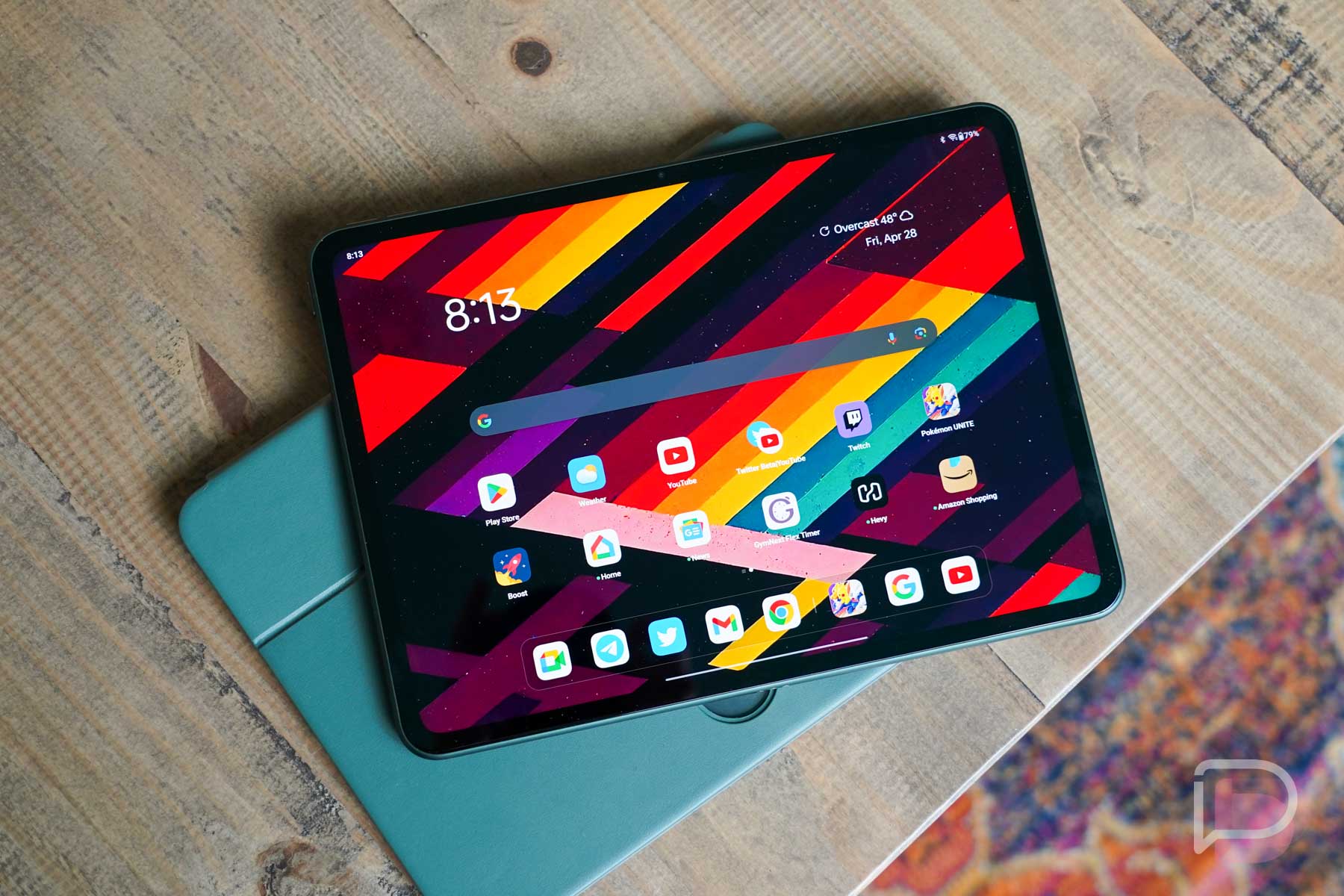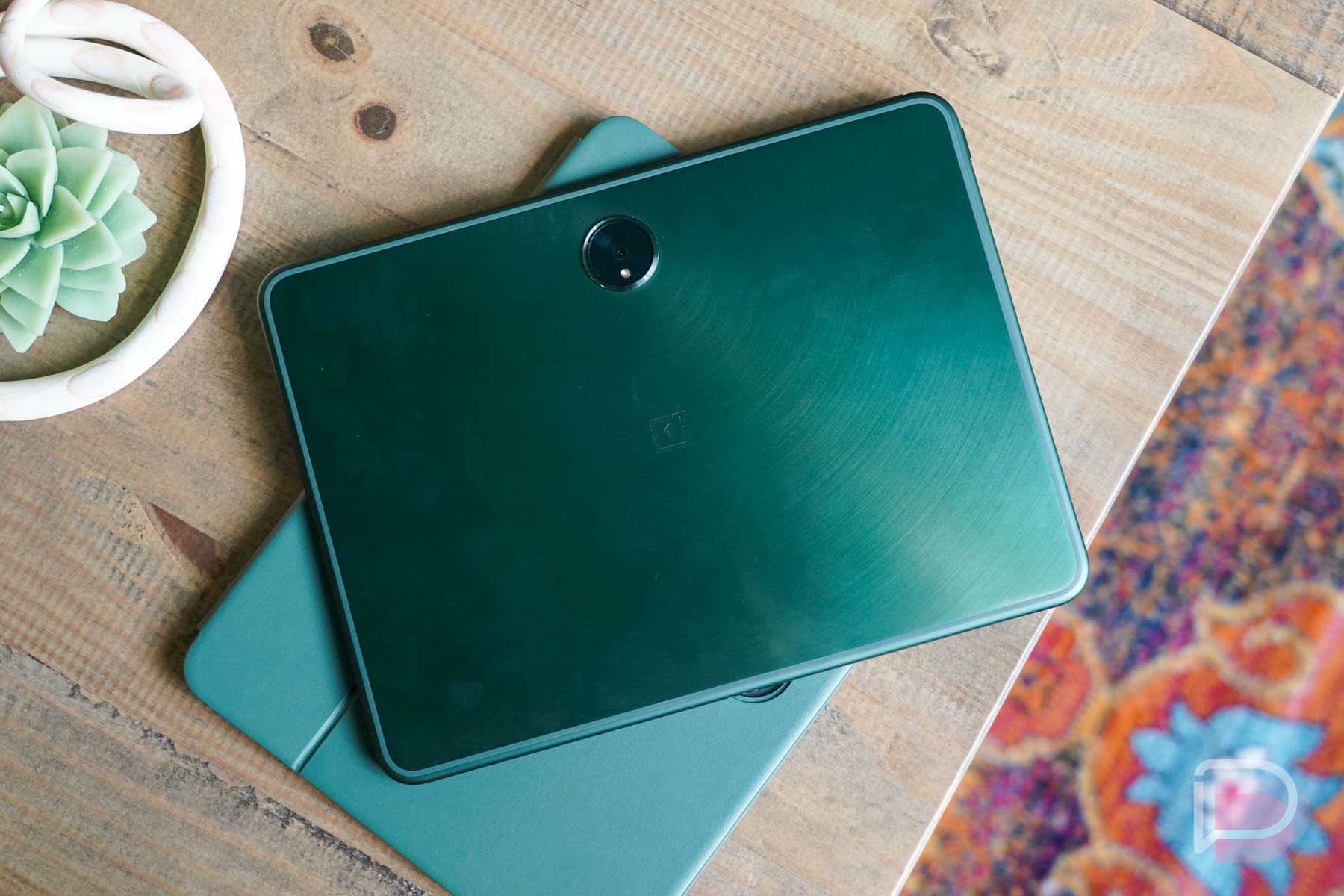When I first heard rumors of OnePlus making a tablet, I couldn’t help but wonder, why? I say that because the tablet world seems so dominated by Apple, who essentially makes the default tablet, that I wasn’t sure it was worth it for anyone else to give it a shot. Sure, Samsung makes nice tablets too, and they basically fill up the rest of the space that isn’t filled with iPads. With the two holding it down for all big screens, shouldn’t the focus from OnePlus be elsewhere, like trying to win back the enthusiast crowd or US carriers?
But you know what, after learning all that OnePlus was trying to offer with the OnePlus Pad and then playing with one for the past couple of weeks, I’ll say this – Why not, man?
So yeah, I’ve had the OnePlus Pad here and done my best to use it in various settings or to do a variety of tasks. I mostly failed at trying to get the most out of it, because a tablet to me is nothing more than a gaming machine that is also used for watching media. And if you want to toss in some Twitter, read a story or three in Chrome, and then maybe type out an email reply from time to time, sure, do that. But to me, a tablet will never do what a computer can do (or that I like to do on a computer), so I didn’t try to turn the OnePlus Pad into one. I simply used it like I like to use a tablet.
Got it? Here’s a quick OnePlus Pad review.
What do I like about the OnePlus Pad?
The size and design. I do really think OnePlus made a tablet that is just about the perfect size and shape. It’s mostly like my 11″ iPad Pro, with its borderline square aspect ratio. In fact, it measures in very close to the smallest iPad Pro (247.6 x 178.5 x 5.9mm), only stretching beyond its frame by a few mm (258.03 x 189.41 x 6.54 mm). But this size and shape is so good, because it is a comfortable hold in portrait, yet wide enough in landscape to watch video or run a couple of apps. It’s not excessively wide like Samsung’s premium tablets, which I find far too wide for heavy use.
The OnePlus Pad isn’t that heavy at 555g and feels mostly premium with this aluminum body. Where it really shines is in the edges, where OnePlus really rounded everything off to make for a soft-touch feel that you can hold for hours. This is the most comfortable tablet I’ve held in some time.
I don’t necessarily love the green color they chose and would have preferred a black or silver tablet, but it’s fine. My biggest gripe is with the unnecessary camera hump in the middle of the back. Look, tablets do not need cameras and they especially don’t need huge camera humps that are always in the way. I think OnePlus meant for the rear camera to be a design highlight, but it looks bad and shouldn’t have been placed there. No one cares about the single camera on the back and they’ll probably be annoyed about it being there.
Outside of the camera hump, I like the overall design and size of the OnePlus Pad as a really comfortable, well-built, premium-feeling tablet.
The price and available accessories. At $479, the OnePlus Pad can be had with 128GB storage and 8GB RAM. It packs inside of its metal body an 11″ LCD display with up to 144Hz refresh rate, quad speakers, a decent yet budget-friendly chipset in the Dimensity 9000 from MediaTek, and a large battery that does seem to last a long time. You get quite a bit for the price, even if it’s not all top tier (like the display and processor).
If we’re comparing to Samsung’s cheapest Galaxy Tab S8 with the LCD display, that would run you $630. The closest iPad with a high-refresh rate display is the iPad Pro 11″, which starts at $799. If you want a smooth display, solid performance, and a tablet that is incredible to hold, the price really can’t be beat here.
And on top of the great price, OnePlus has made a set of accessories that are somewhat standard for any semi-serious tablet. They are offering a $149 magnetic keyboard case, a $39 folio case, and a $99 stylus that can magnetically charge on the top of the Pad. I’ve used the magnetic keyboard case and stylus and don’t have many complaints about either. The magnetic keyboard case can be a bit fussy to play with if you just want to detach the Pad, but it does a decent job as a keyboard in a pinch, with trackpad to boot. The stylus is a stylus and I have no idea what OnePlus wants you to use it for. I found little reason for it to exist other than for those who like to…take notes by hand?
Performance seems solid. I’ve got to be honest and tell you straight-up that I know very little about MediaTek’s Dimensity 9000. This is the first device I’ve used with it and for now I have no major complaints. Like I said in the opening, I use tablets to watch videos, play some games, and casually browse the internet or social networks. For all of that stuff, it runs just fine.
The heaviest loads I push onto the Pad are probably long sessions of Pokemon Unite with my son. I have all graphics and framerate settings maxed and it runs the game no problem. It doesn’t get hot, it doesn’t drastically drain battery during an hour of use, animations are smooth, and the gameplay almost never stutters. If I have seen some stuttering, I’d bet that it is server-related rather than from the Dimensity 9000 not keeping up.
The only regular issue I find is when using navigation gesture to leave an app or back-swipe. I can’t tell if it’s a display issue around the edges, the way OnePlus’ OxygenOS is trying to work, general touch responsiveness being poor, or something else. But I can’t tell you how many times I’ve swiped up from the bottom to then leave an app and the tablet acts like I hadn’t touched it. It’s odd. Probably wouldn’t stop me from using it, but I do notice it.
Battery life. OnePlus packed a large 9510mAh battery in the OnePlus Pad and gave it 67W fast charging. I didn’t keep much of a battery life log like I would with a phone because the usage of a tablet is so sporadic. You don’t use a tablet like a phone. You use it for short periods of time and then put it back away while you live life, use your phone for more important tasks, grab a computer, etc. What I can tell you is that I only needed to charge the OnePlus Pad a handful of times over a couple of week span. This battery and chipset sip juice, plus the standby time is incredible.
Where are my worries with the OnePlus Pad?
Software and support. I’ve shared my issues with OnePlus’ OxygenOS in recent years, mostly as it relates to the Android skin running on phones. When running on a tablet, I’ve found it less offensive, that’s for sure. I think that’s mostly because of the way I use a tablet, which I described above, that happens to be in a much less aggressive or needy way. Tablets are simple to me, while a phone is a tool I use to get things done.
So overall, OnePlus’ tablet version of OxygenOS is solid. It has all of the features you need from a tablet. There are dual screen and dual app setups, quick swipe-out menus to launch favorite apps, shortcut setups for quick dual-app launches, a taskbar that shows recent apps, and a split notification area that separates notifications and quick settings. Many apps also take advantage of the bigger screen like they should and you can easily do multiple things at once if you want.
My concerns are in some of the specialty features. One is a data sharing system that lets you use your phone to share its data connection when on the go with the OnePlus Pad. There’s also this cross-screen transmission feature to quickly share images from phone to tablet for editing, as well as a screen mirroring idea that pops up your phone screen on the tablet. All of that sounds cool! Unfortunately, all if only works if your phone also happens to be a OnePlus phone. Also, the data sharing connection won’t launch until June.
That’s fine if OnePlus wants to lock all of that into their ecosystem, but it limits how much you can do if you don’t own one of their phones too. That’s unfortunate to see.
My other concern is in long-term software support. OnePlus is saying all of the right things at the moment, that they are offering up 4 years of software support, including 3 years of Android OS updates. But being a new device type, and also knowing their history of taking longer and longer to update devices as they age, l will have to hope they prove me wrong in worrying that the support will dwindle quicker than it should.
No fingerprint reader. OnePlus did not include a fingerprint reader on the OnePlus Pad. There isn’t one in the display or on the side frame or the backside. Your only options to securely bypass a lockscreen are PIN/pattern/password or with face unlock. The face unlock on this tablet doesn’t work that well, so you’ll find yourself constantly having to enter your secure info. This may seem like a silly complaint that wouldn’t bother you, but trust me, it gets old. I’m so used to a fingerprint reader letting me into any device that having to manually enter it every time on the OnePlus Pad (because again, the face unlock barely works) is tiresome. Why couldn’t they just give us a reader in the side frame or within a power button?
Should you buy the OnePlus Pad?
My basic answer here is: Maybe! Sure!
I like the OnePlus Pad for a number of reasons that I described above that definitely outweigh the couple of areas of concern I have. The shape and size and finish of the Pad are my favorite parts of it, plus the 144Hz display looks solid in the tasks I put it through. Battery life was great, performance met my expectations, and the OS didn’t completely turn me off like it often does on OnePlus’ phones.
At $479, I’m not sure there are many tablets that match-up to OnePlus’ first big screen device. While not the best tablet on the market, this is a really good first attempt and a proper budget pick.



Collapse Show Comments27 Comments